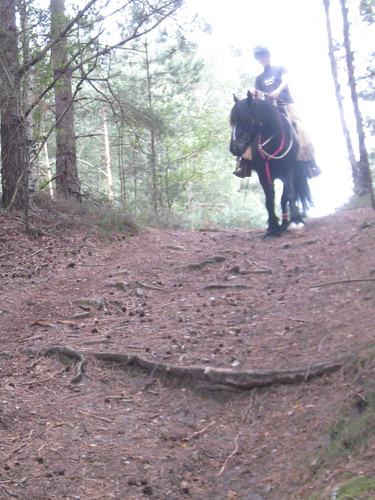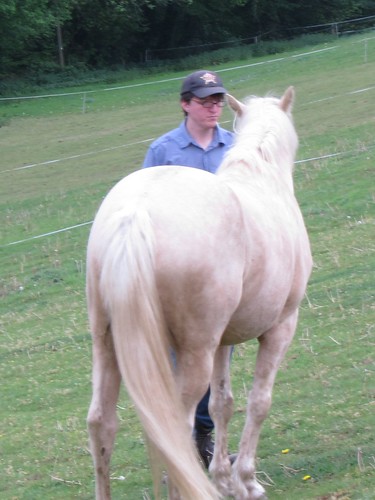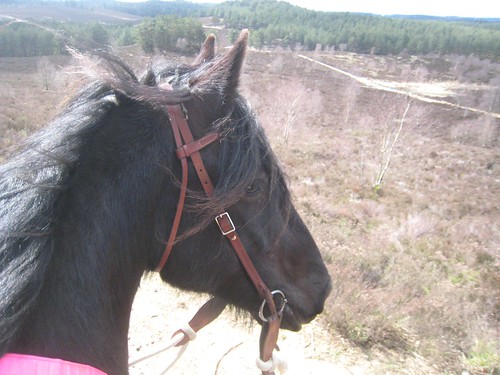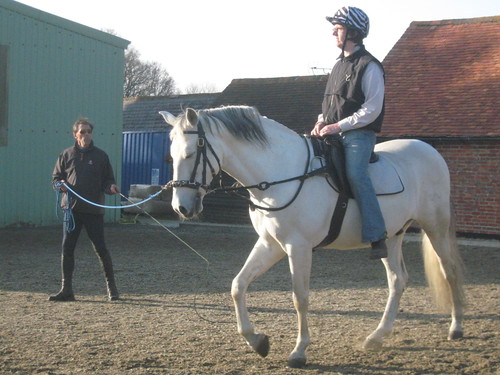
At the start of the summer I bought a new horse- Iris is a beautiful grey mare with a bit of dressage in her parentage and a genuinely wonderful nature. She didn’t have much experience, which was good news from my perspective because it is often easier to build training from the ground up, so for most of the summer we have been working on our schooling and learning to understand one another. By the end of the summer I felt she was ready to start going out on the trail and we also made our way to our first horsemanship clinic.
One thing that both of these activities have in common is that they took Iris a long way out of her comfort zone – on the trail she is away from her usual home and her known space, at the clinic we had to pass terrifying donkeys of doom ( no, I’m not really sure what they had said to upset her ) then work in a large indoor arena with ten other horses cantering around.
What I noticed as we worked in these environments was that when I felt Iris’ anxiety pick up, I was taking control more, shortening my reins a little and directing her feet to make it clear where I wanted her to be going. As my horse got more anxious, I would be working harder to direct her and sooner or later we’d get into a dispute about where we should be going and whether or not we were in imminent danger.
During the clinic, Martin talked about how he uses the rein; always keeping in mind his goal of having a light, soft, riding horse he will ride on a long rein, ask with a subtle cue and then back that up with a firm bump and release if the horse chooses to ignore the initial ask. That is essentially the whole process he uses, he never tries to hold the horse in position and he doesn’t pull on the rein, he just teaches them to carry themselves the way he wants them to be going on a soft rein, so he can keep a hand free for roping or working other horses.
As I worked on developing this type of feel I found that all our work got much easier and that Iris was less emotional in situations that had bothered her before. I realised that when I was picking up the rein as she got more concerned I was actually trying to pre-empt something which wasn’t actually happening, but my expectations were making her think that there was something up, resulting in me creating exactly the kind of problems I wanted to prevent. The whole thing was like the plot of a complicated time travel story.
The outcome has been that since the clinic I have concentrated really hard on not picking up the rein until something has actually happened. If I see something that I think my horse might worry about, I get ready to respond if I need to, but I don’t actually do anything – except maybe to rub on her – and I keep the reins long.
This is difficult for me- I like to feel I am in control – but it turns out that when I stop trying to take over every time I imagine something that might bother my horse, I very rarely need to take over at all. Iris is very green as a trail horse, but she has a great heart and a steady nature so although we do have the odd spook and sometimes she does decide that it might be time to go for an unrequested trot, she comes back to me beautifully when I do pick up the rein.
It is almost as though the more I trust her to do the right thing, the easier it is for her to trust me.








